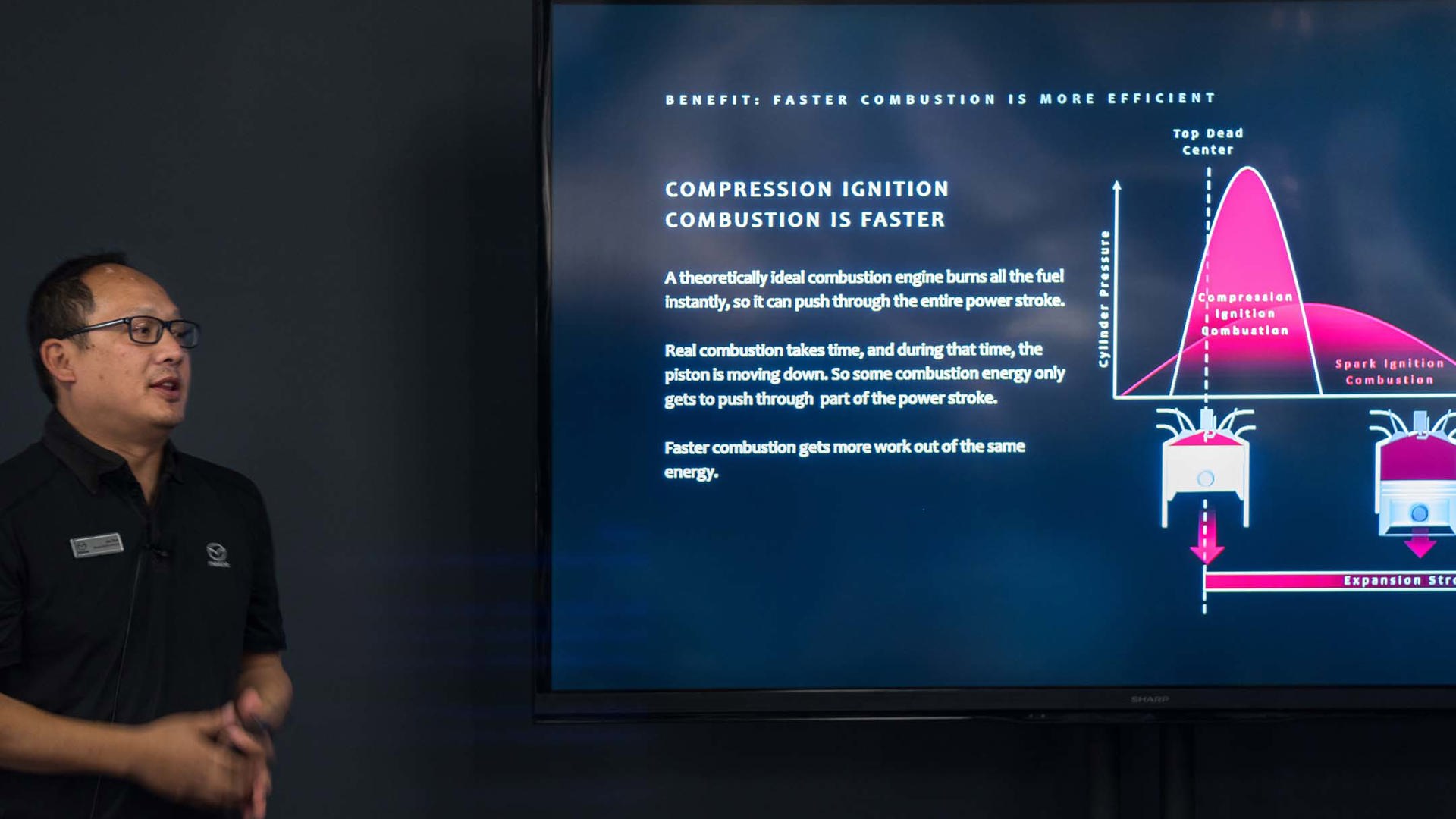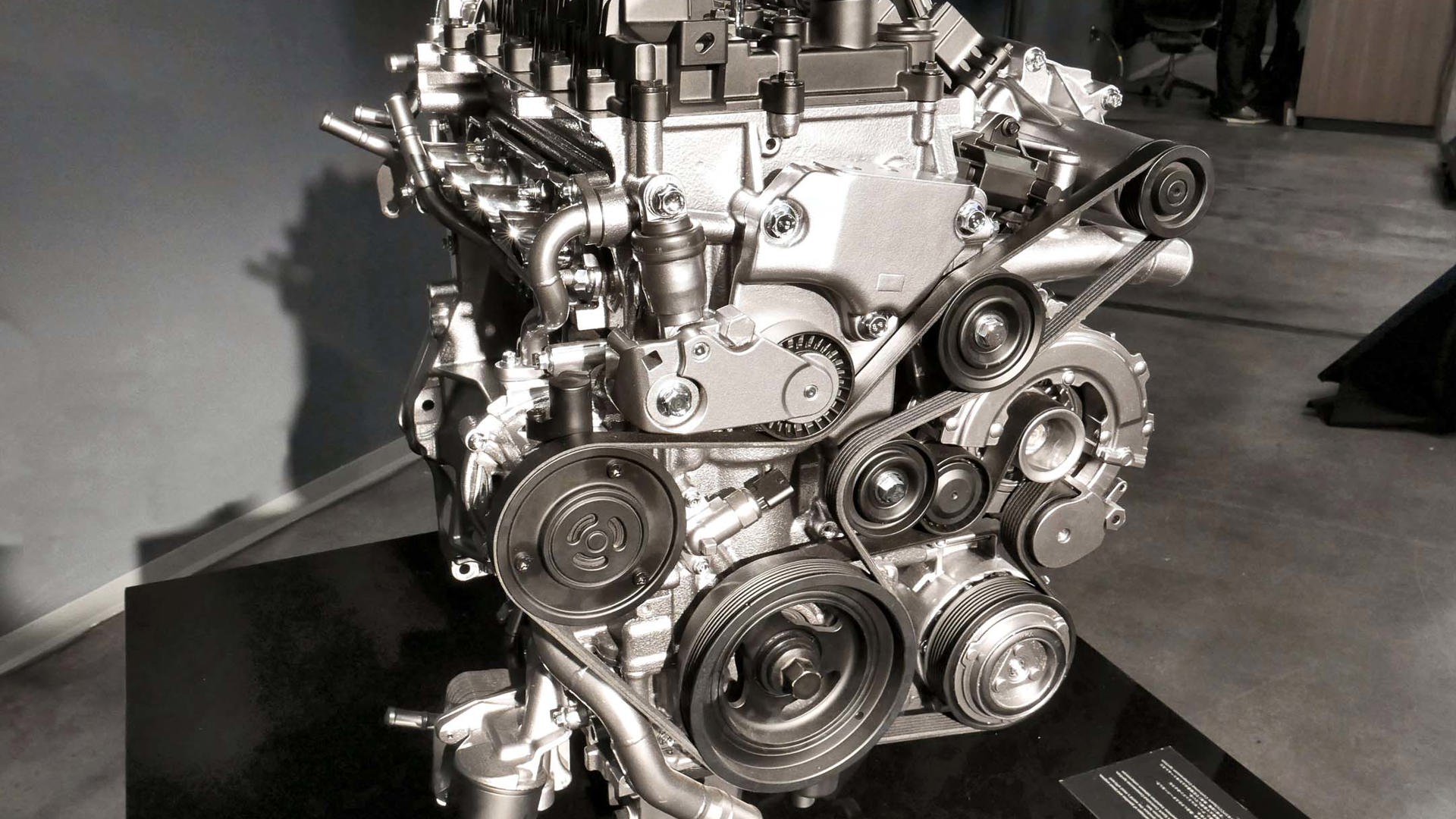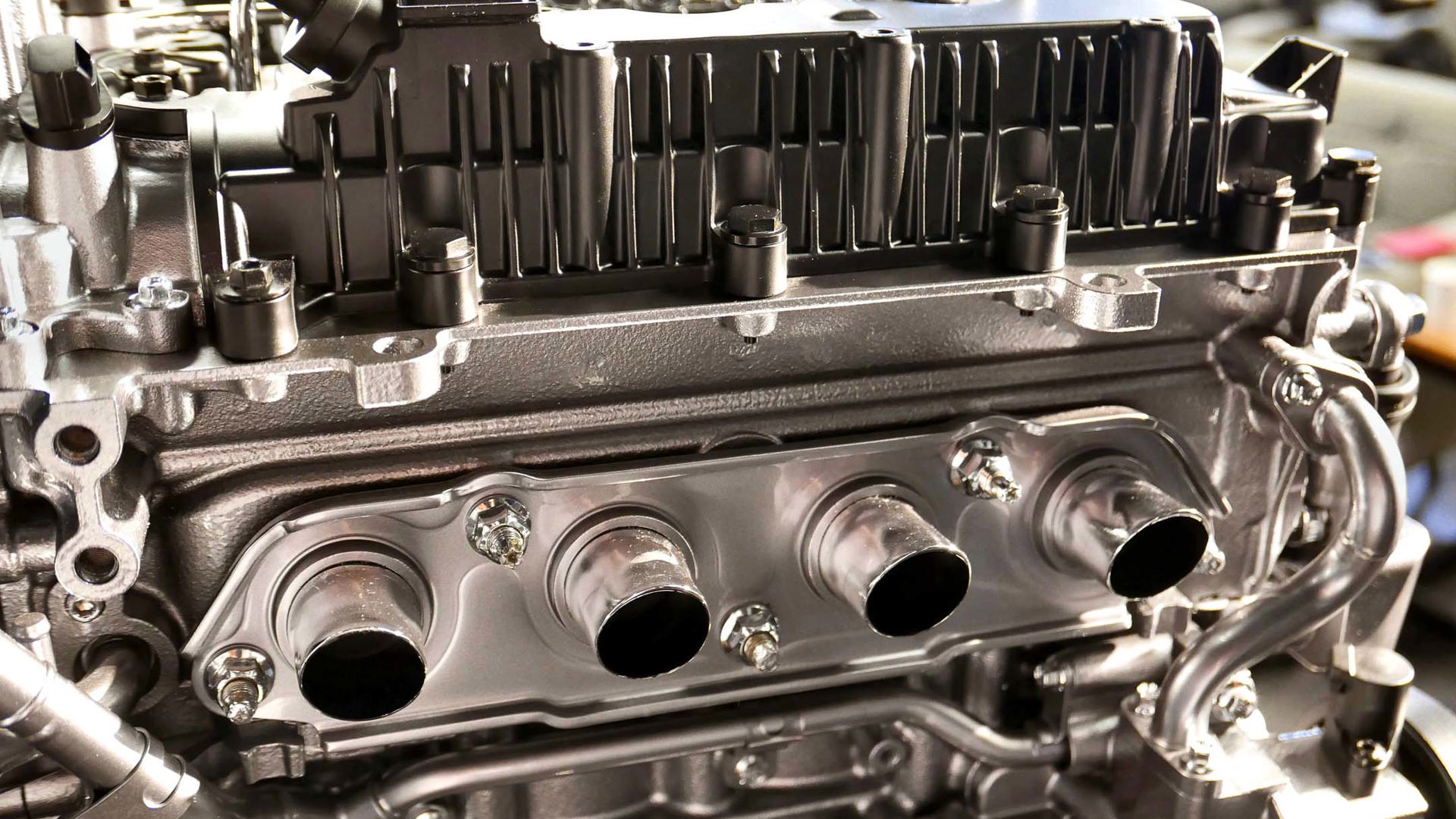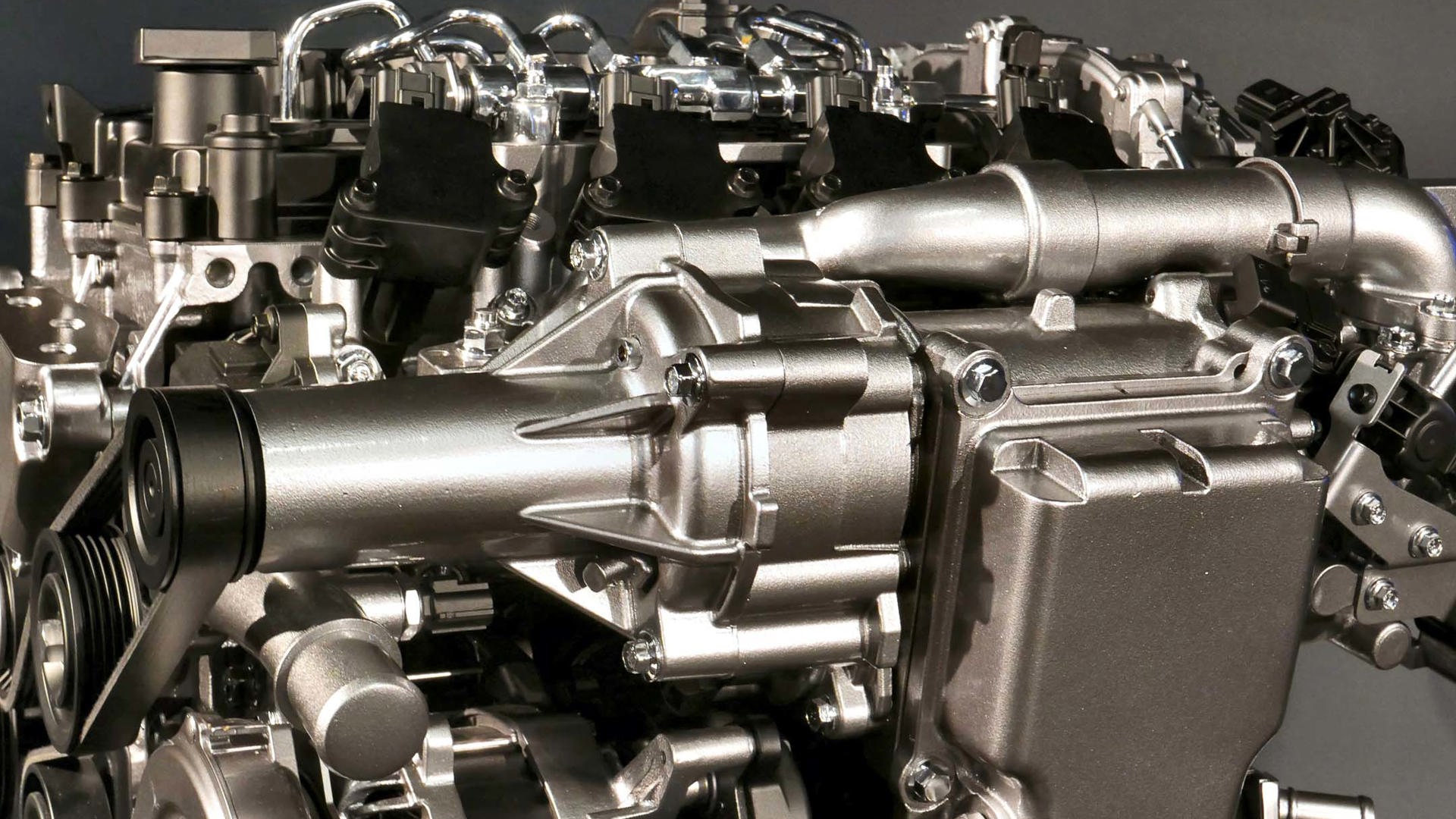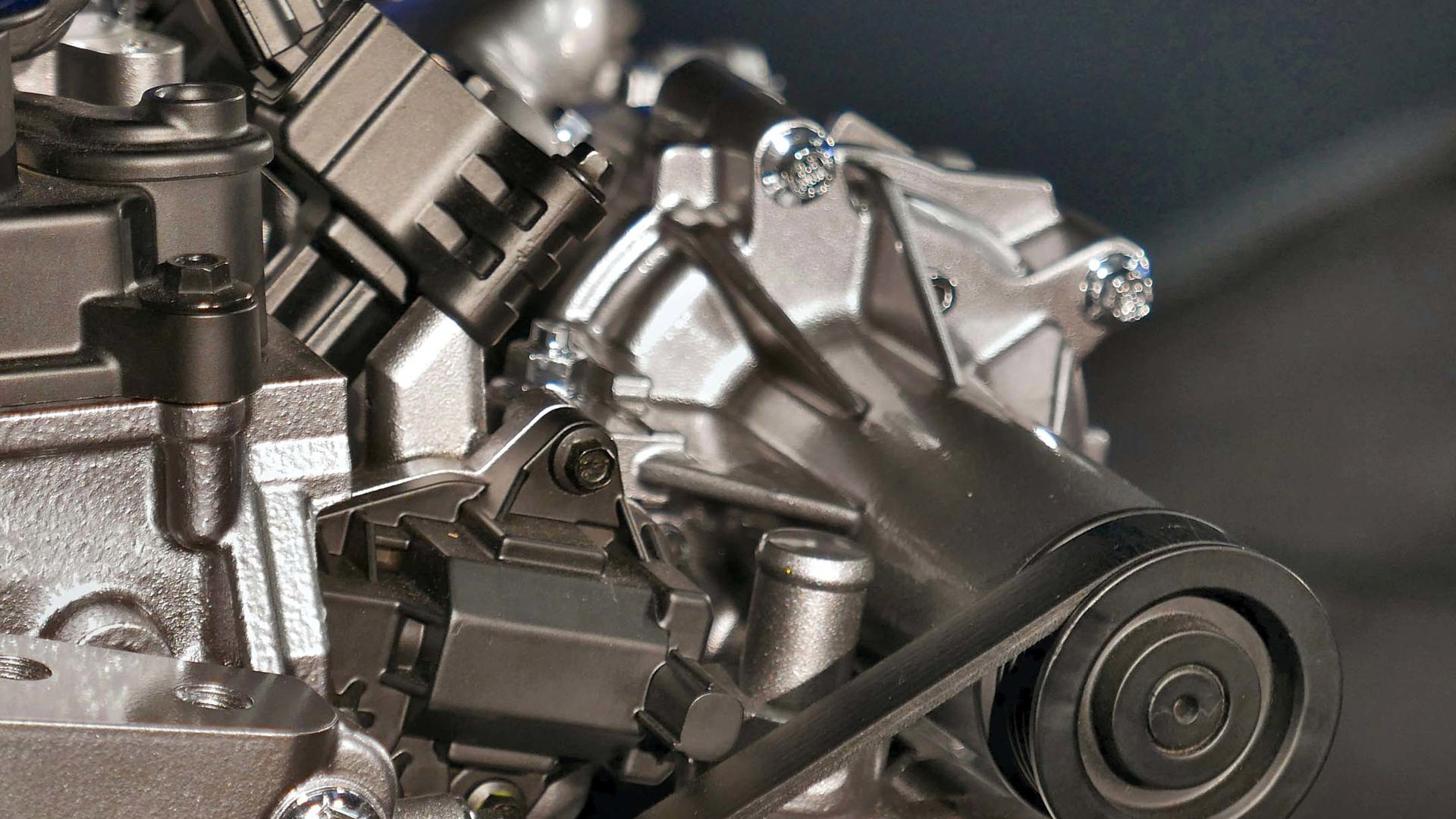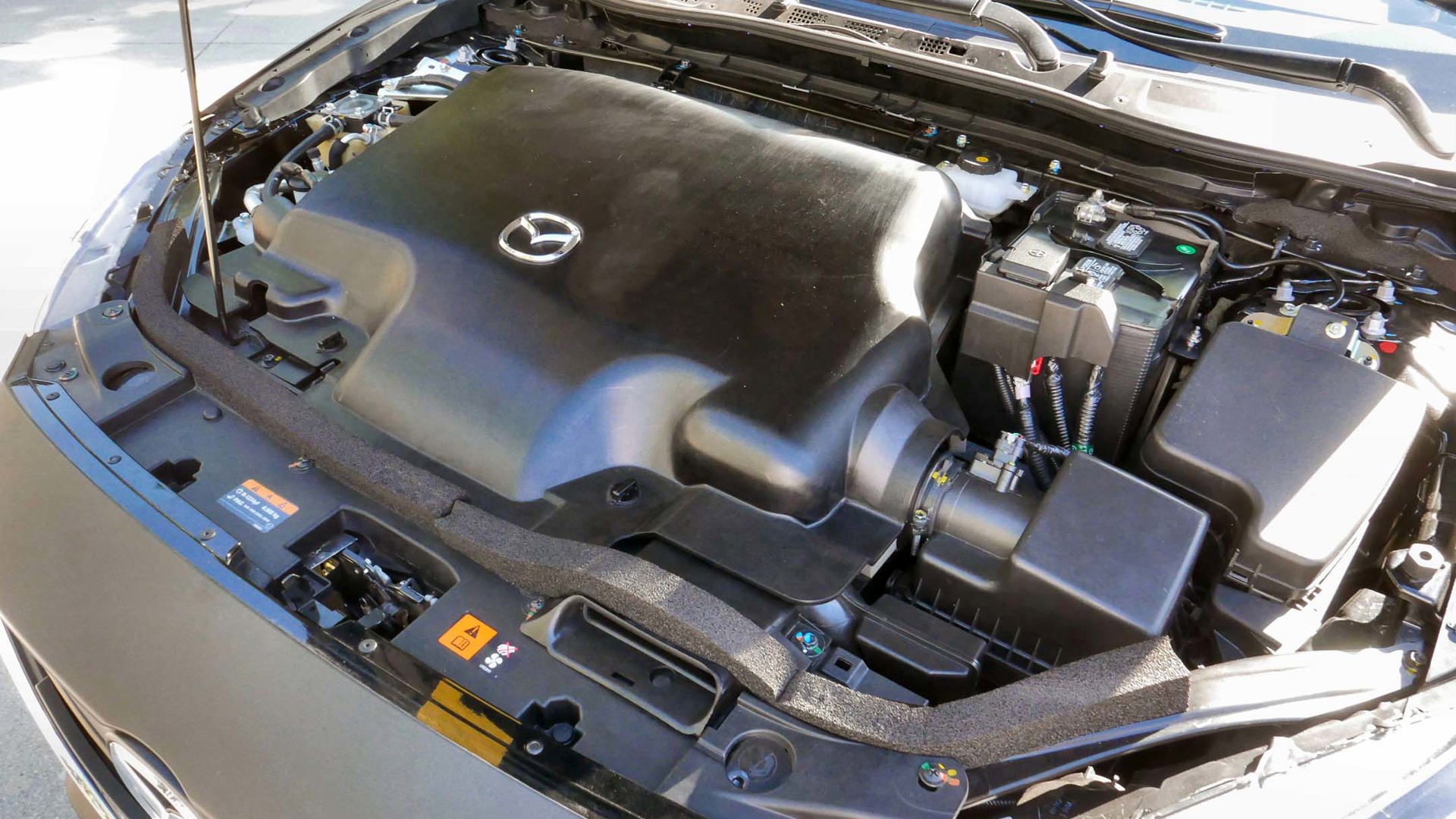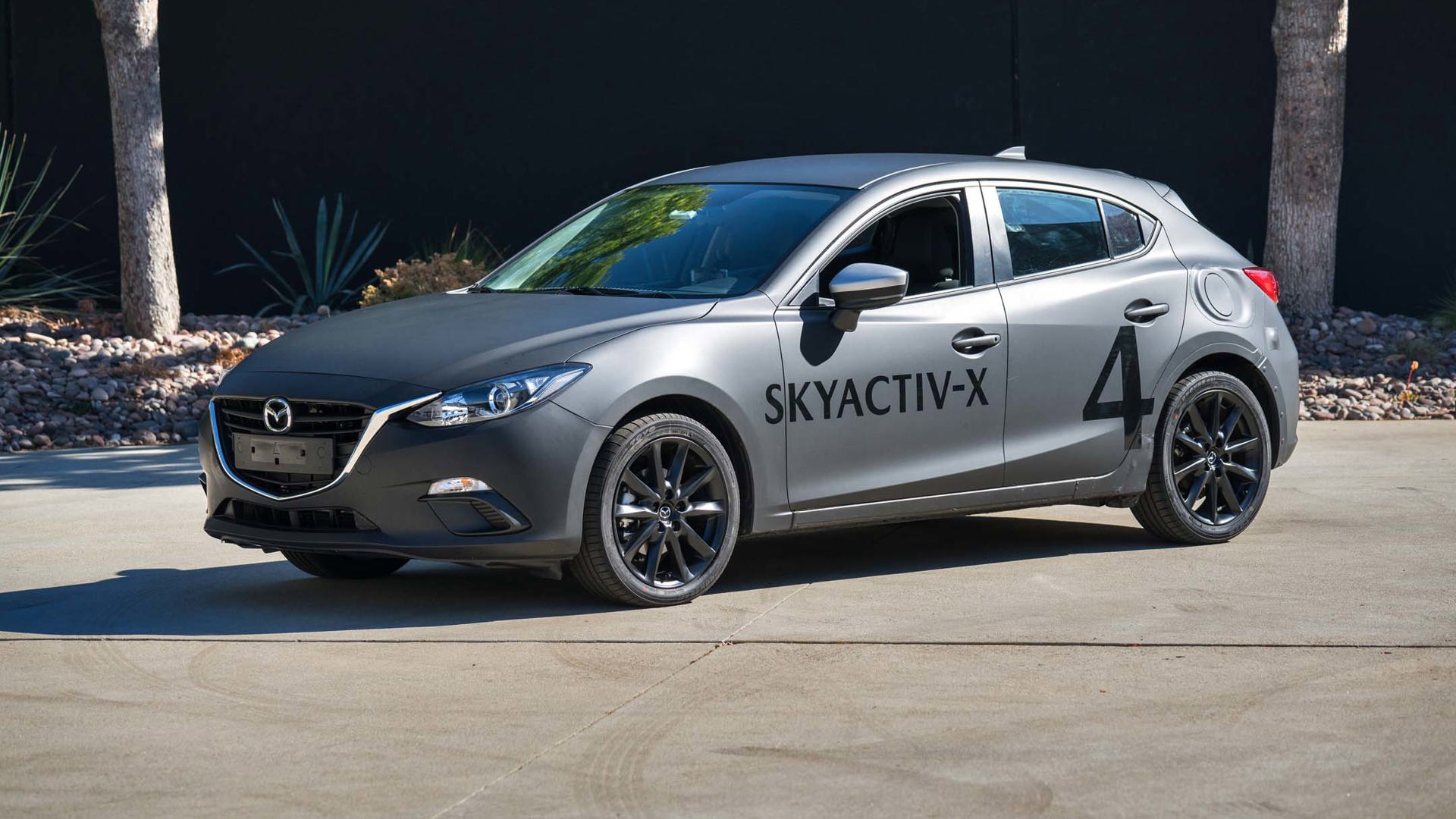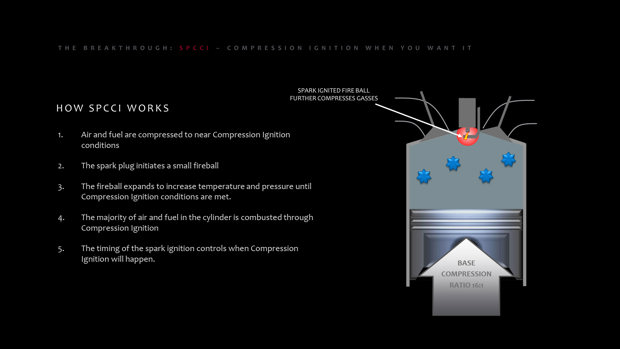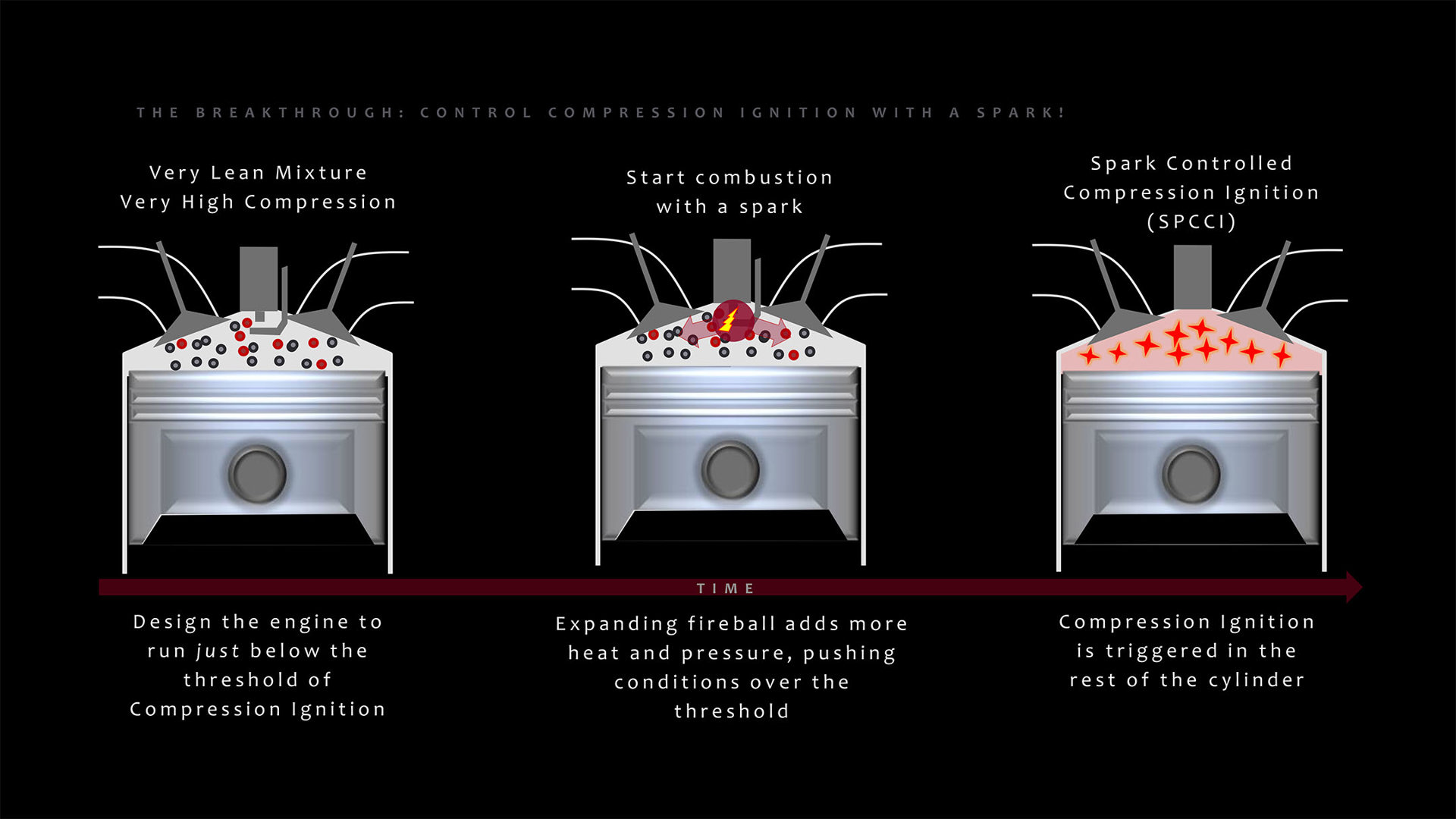When you find yourself forced to do more with less, it’s time to get creative. Years ago, having set itself the goal of dropping its vehicle emissions by 30 percent and improving its fuel economy by the same measure (accomplishments which go hand-in-hand from an engineering perspective) by the year 2015, Mazda realized it couldn’t rely on the same EV and hybrid philosophy adopted by other automakers seeking the same results. Lower overall sales volumes would have required a massive shift to electrified drivetrains that its customers simply had no appetite for, forcing its engineers to instead take a long, hard look at what could be squeezed out of the internal combustion engines it already had in its stable.
The end result of that introspection was the SkyActiv-G family of gas engines and the SkyActiv-D diesels sold in other markets, both of which translated into mission accomplished for the Mazda team. Just in time, too, because the next even more ambitious target was lurking just over the horizon: a 50 percent drop in overall fleet fuel consumption and emissions by the year 2030.
With EVs still off the table, and the small displacement turbocharged motors favoured by larger automakers deemed too peaky in real-world performance to follow through on efficiency targets, Mazda once again returned to its SkyActiv architecture. Only this time, high compression would be but one of the tools used by its brain trust to eke out substantially more kilometres from a single tank of gas.
It would take an aggressive and unprecedented move for the company to leap beyond existing ICE limitations, but after several years of development, the fruits of that experimentation are very nearly here. Dubbed SkyActiv-X, the new technology marries the compression-ignition efficiencies of a direct-injection diesel motor with the versatility of a spark-fired gas motor.
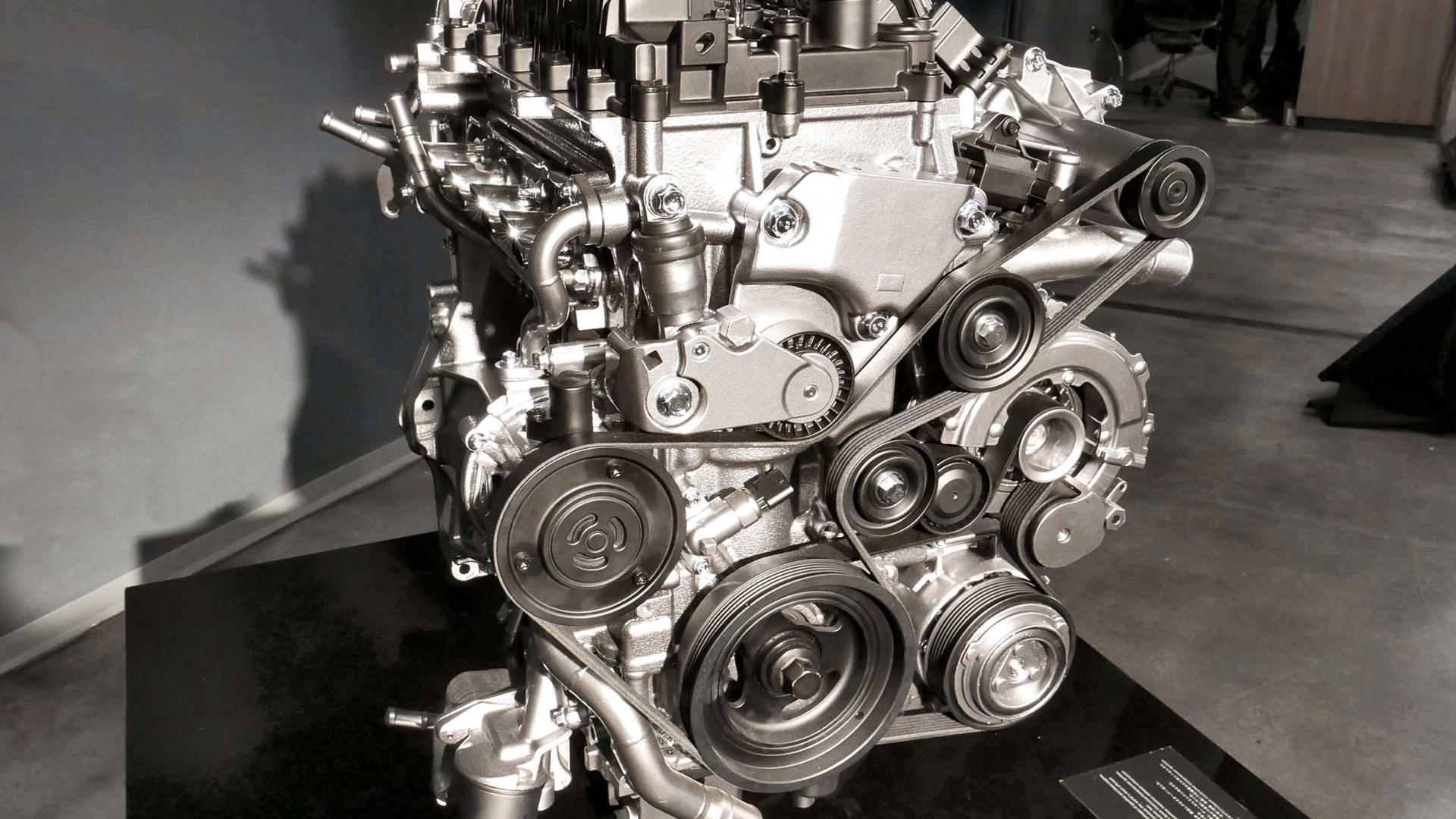
Here’s how it works
Head swimming? Let’s break it down to the basics. Engineers have been trying for years to build gasoline engines that don’t require a spark plug, but instead rely on combustion via compression, in the same way that a diesel motor operates. Done properly, it’s possible to “lean out” the fuel mixture, or use significantly less fuel volume as compared to oxygen volume, while still generating usable power.
Unfortunately, these designs have only been effective under very narrow conditions, making them nothing more than test-bench stars incapable of tackling real world driving.
It was with this in mind that Mazda pursued the combination of compression ignition and spark ignition techniques, in a bid to expand the operating profile of a lean mixture motor without sacrificing flexibility or on-demand acceleration. Calling it “spark-controlled compression ignition” (SCCI), as employed by the SkyActiv-X motor, Mazda is able to trigger the initial fuel mixture ignition with a spark in a small area of the cylinder, but then rely on compression to burn up the remainder of the fuel and oxygen.
By seamlessly handing ignition back and forth between the spark plug and compression, it’s possible to realize significant efficiency and power gains over a traditional engine.

Proof is in the fuel mix, and prototype driving
To prove their point, Mazda invited a group of journalists to their tech centre in Irvine, California, where we had the opportunity to pilot perhaps the most unusual automotive chimera I’ve yet to sample on the road. Featuring the body of the current Mazda3 sedan sitting on the platform of the upcoming redesign for that same compact car – and motivated by a pre-production version of SkyActiv-X technology – this rolling laboratory served as a cutting-edge demonstration of where the future of the brand is headed.
The initial implementation of SkyActiv-X takes the form of a 2.0-litre four-cylinder engine that’s estimated to produce in the neighbourhood of 180 horsepower and 170 lb-ft of torque. Those numbers are a close match for the larger 2.5-litre SkyActiv-G unit currently offered by the brand, with a predicted 20 percent boost in efficiency over the existing 2.0-litre G. Intriguingly, SCCI also allows for Mazda to use lower gearing and run the motor at higher rpm without a fuel penalty, which runs counter to the “skip to the highest gear” mentality that drives current gas-sipping transmission development.
In the X-equipped Mazda Franken3, the driving experience was heightened by the presence of a tablet displaying which drive mode the engine was operating in, allowing me to easily see the transition between spark to combustion to ultra-lean in real time. It’s a good thing it was there, because there’s no mechanical indication that this magic is transpiring under the hood.
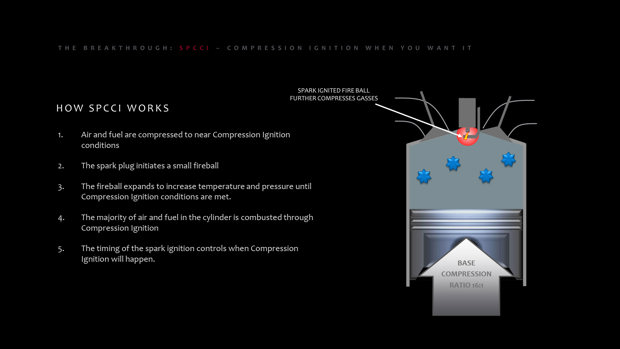
Nor is there much in the way of instrumentation, either, as this prototype’s dash has been stripped, safetied, and wrapped in the same black duct tape that keeps other, sharper corners of the cabin from accidentally breaking the skin.
It was a barebones drive on which I was accompanied by engineer Ryan Foisy, who apologized for the occasional engine knock thrown by the manual transmission vehicle – a victim of a recent calibration incident. There were no sorries necessary in the automatic, however, which displayed generally acceptable acceleration and far smoother operation both on the highway and in Los Angeles traffic.
Mazda still swimming against electrification tide
We’re at least a year away from seeing SkyActiv-X in showrooms, and the brief hour spent behind the wheel of a pair of development cars doesn’t tell the entire story of how this intriguing technology will handle itself when it finally hits dealerships (with emissions control equipment and full noise and vibration insulation attached). Still, spark-controlled compression ignition is yet another example of innovation from a company founded on giving its engineers permission to swim against the current – and the courage to build what they bring back with them downstream.

